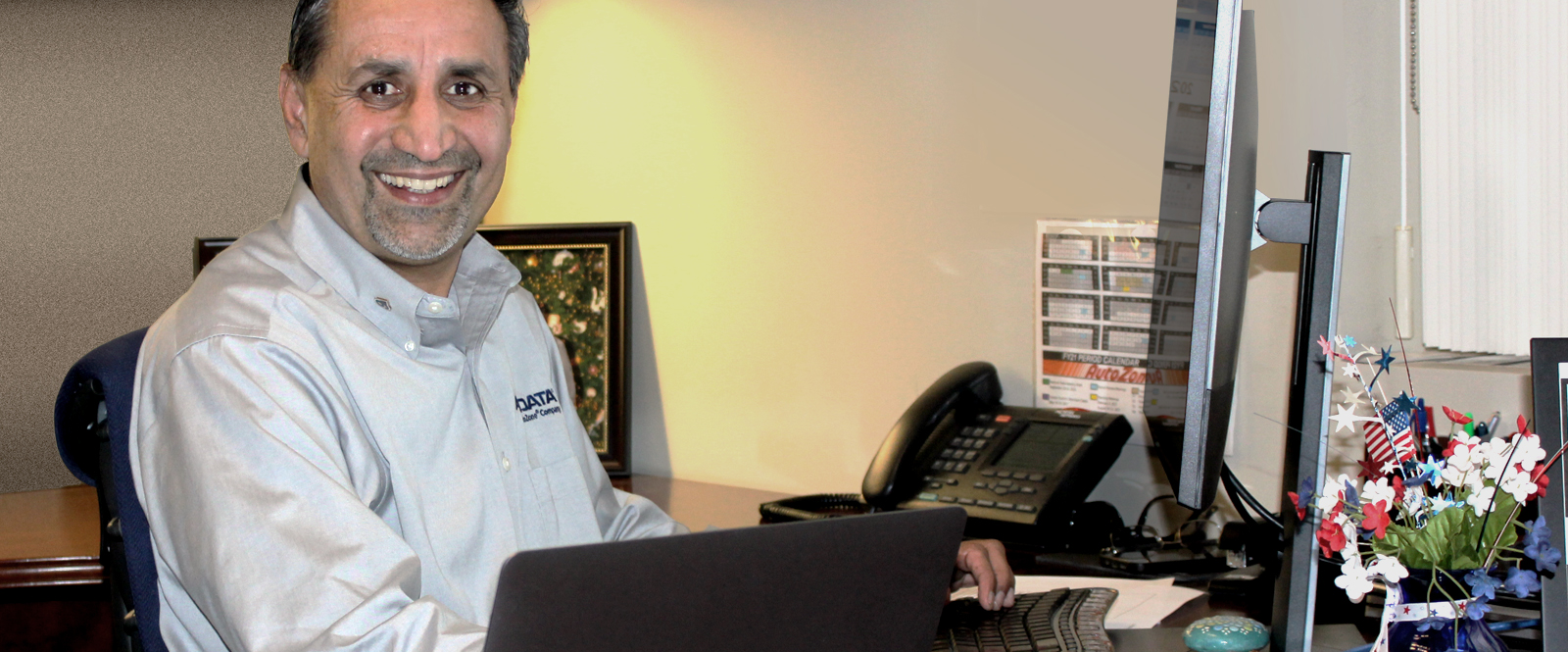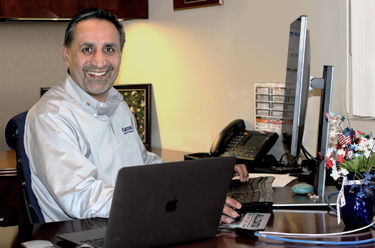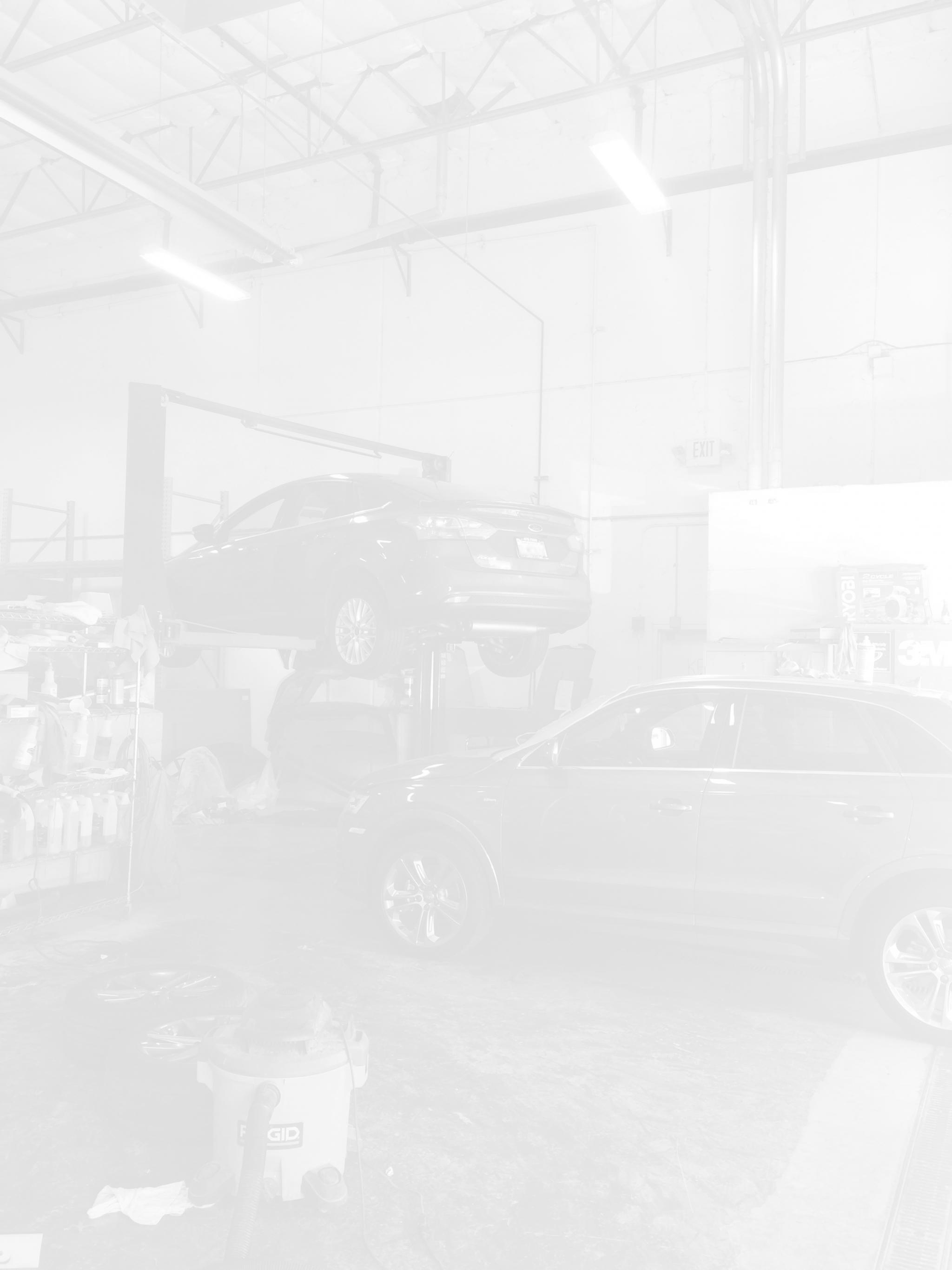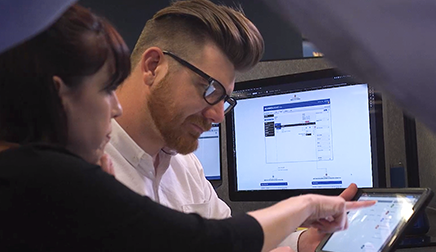
Q&A: ACCESSING ADAS, INTEGRATED DIAGNOSTICS, AND MORE

Autosphere interviews ALLDATA President Satwinder Mangat
Autosphere Magazine Editor-in-Chief Huw Evans recently interviewed ALLDATA President Satwinder Mangat on what’s down the road for mechanical and collision shops. Read on for their conversation about the increasing demand for accurate ADAS information and the potential for integrating mechanical and collision diagnostics in shops.
Autosphere Magazine: As vehicles become more advanced and employ more technology, what are some of the key things collision shops need to consider when it comes to effective diagnostics?
Satwinder Mangat: Increasing vehicle complexity has made diagnostics and repairs more difficult for technicians, with very specific requirements from the OEMs. For shops, preparation is key – having the right tools and the latest technology for new vehicles, particularly hybrids and EVs. Keeping technicians trained on these new technologies is essential.
For both collision and mechanical repair shops, one of the most significant industry trends has been the push to follow the manufacturer’s recommended repair procedures to ensure safety, accuracy, and to avoid liability. On the collision side, incorporating pre- and post-scanning is a must. Many experts also make the case that as a best practice, mechanical shops should also conduct pre- and post-scans to reduce the shop’s liability and to provide vehicle owners with the full health check of the vehicle.
Repairs that were once considered routine will trigger multiple ADAS system requirements due to advanced safety and convenience features.
Now that Advanced Driver Assistance Systems (ADAS) are standard on practically all new vehicles, shops need quick access to ADAS information in order to see the extent of OEM-required calibration and whether they can perform the procedures in-house or will need to sublet.
Everything on the car affects ADAS systems. Repairs that were once considered routine will trigger multiple ADAS system requirements due to advanced safety and convenience features. Camera-based system technology will require calibration due to tire replacement, suspension work, engine modifications, steering system repairs, outside rear-view mirror replacement, or even a simple wheel alignment. Calibrations may include static procedures in the shop or dynamic procedures on the road that can take an hour or more to perform.
That’s why we added ADAS Quick Reference to ALLDATA – now, just one click takes the estimator or technician to the latest ADAS information for that specific vehicle year/make/model/engine. Knowing what calibrations may be required is critical to vehicle safety.
AM: What are some of the ways in which solutions offered by ALLDATA enable technicians to save time when diagnosing specific problems
SM: ALLDATA Collision has everything an auto body technician needs for OEM-accurate repairs and liability protection, including body and frame sectioning, handling of new materials, evolving technologies such as hybrids and panel replacement, and more. Our easy-to-use format saves time by helping shops find information faster. ALLDATA’s database uses the same standardized format for every make and model, so technicians don’t have to learn a different approach for each one. Our new ADAS Quick Reference feature has been very well received.
ALLDATA Collision Advantage makes sure shops never miss a manufacturer’s required repair. It works with ALLDATA Collision’s industry-leading repair information and the 3 major estimating systems to analyze an estimate in seconds and flag OE-required repairs, so estimates are accurate the first time. Everything is integrated, everything works together to create a seamless and accurate process from scan-in to scan-out. By incorporating this quick and easy process into every collision repair, shops save valuable time upfront and help limit the liability which continues to threaten the industry.
ALLDATA Diagnostics works with any tablet, making it a portable, professional-level scan tool. ALLDATA is built in, so the estimator or blueprinter takes the tablet right to the vehicle and has full access to all the relevant OEM data and procedures required for accurate repairs as well as ALLDATA’s interactive color wiring diagrams. Thanks to its user-friendly navigation and seamless integration with ALLDATA Repair or Collision, it takes far fewer steps to get the results shops need. Additionally, DTCs show a list of probable causes related to that code.
That’s why we added ADAS Quick Reference to ALLDATA – now, just one click takes the estimator or technician to the latest ADAS information for that specific vehicle year/make/model/engine.
Technicians can also access ALLDATA Community to research repairs verified by other technicians and our ASE-certified Master Technicians, post their own questions, and tap into millions of probable causes. Best of all, it’s included for free.
Our call-in Tech-Assist hotline service is like having a Master Technician in your shop that isn’t on your payroll. 30+ ASE Certified Master Technicians provide diagnostic expertise for tougher challenges and even step-by-step repair assistance.
AM: What do you feel are some of the best ways to integrate both collision and mechanical diagnostics?
SM: One of the primary goals for both mechanical and collision shops is to provide safe and proper repairs, and in order to effectively accomplish this goal, shops need to properly diagnose the vehicle. This is a skill set that has been long sought in the mechanical space, and more recently in the collision space, because OE repair procedures require pre and post-scanning vehicles, which was primarily brought on by the proliferation of ADAS components.
So, we’re beginning to see more collision shops hire diagnosticians from mechanical shops, and we’re also seeing some larger MSOs acquire companies with the expertise. In many cases, collision shops are subletting this work, which may or may not be sustainable, due to cycle time pressures.
AM: If applicable, are there any situations where you’ve seen the benefits of mechanical and collision diagnostic integration within the collision centre environment?
SM: Provided collision centres have the talent in-house, there are many benefits to diagnosing and repairing the vehicle onsite … cycle time, LOR, CSI, and building the knowledge base for a demand that appears to be with us for the foreseeable future.
AM: Do you think greater integration between collision and mechanical diagnostics is something we’re likely to see moving forward - and what do you think are the key reasons/factors for this?
SM: A number of large collision MSOs have invested in mechanical service centres and mobile diagnostic services to facilitate the growing need for mechanical diagnostic repairs related to vehicles involved in accidents. Accident frequency is forecasted to decline due to collision avoidance systems, but the severity is targeted to increase. Body Shops will be faced with the challenge of taking on more mechanical diagnostics or subletting the work.
Time will tell but seeing that all new vehicles are coming equipped with ADAS, it seems incumbent upon collision shops to develop a sustainable path to diagnosing and repairing vehicles in-house. Some of the larger MSOs have acquired mechanical and/or mobile diagnostic businesses to fill a skill gap.
AM: How does greater collision/mechanical integration impact technician training and also cycle times for collision shops and their staff?
SM: The biggest challenge will be around the ever-evolving ADAS calibrations and electrification. There definitely is some crossover, but I don’t believe we will see a hybrid tech that performs both collision and mechanical repairs. Shops will need to invest in ongoing training for both and it should be an integral part of any shop’s operational plan. Operationally sound businesses tend to have better cycle times and CSI scores, and ADAS has proven to increase cycle times when the work is sublet.
Our robust technology platform allows us to publish new and updated vehicle information from OEMs daily, including TSBs to make sure shops have the current OEM repair procedures, wiring diagrams, and other information they need.
AM: Given in the past that mechanical and collision shops often had different diagnostics tools and different levels of repair information access, what do you think are some of the ways they can overcome these challenges?
SM: Today, the easiest way for mechanical and collision shops to access accurate repair information is to subscribe to a software solution like ALLDATA that offers up-to-date coverage for 95% of all vehicles on the road today.
Our robust technology platform allows us to publish new and updated vehicle information from OEMs daily, including TSBs to make sure shops have the current OEM repair procedures, wiring diagrams, and other information they need. Finding ADAS info is faster than ever with our new ADAS Quick Reference feature.
There continue to be challenges related to how the manufacturers write repair information, such as the use of “required” vs. “recommended,” which sometimes complicates the transaction between the repair center and the bill payer. Insurance carriers, OEMs, and repair shops need to continue to work together to clarify what is required to complete a safe and proper repair.
AM: Is there anything else you’d like to mention regarding collision and mechanical diagnostics integration?
SM: We are here to help shops operate as vehicle diagnostics and repairs get more difficult and complex. To stay competitive and profitable, shops must:
- Use OEM information when diagnosing and repairing vehicles
- Provide techs with training on new vehicle technology
- Incorporate technology to streamline workflow and increase efficiency
We will continue to innovate and provide tools for the shop ecosystem that increase efficiencies, drive more profits, and deliver accurate, quality repairs to vehicle owners.
Want to see how ALLDATA can improve shop efficiency? Check out our suite of products, each designed to contribute to both shop efficiency and productivity.
If you would like to read more articles like this one please subscribe to ALLDATA News.







